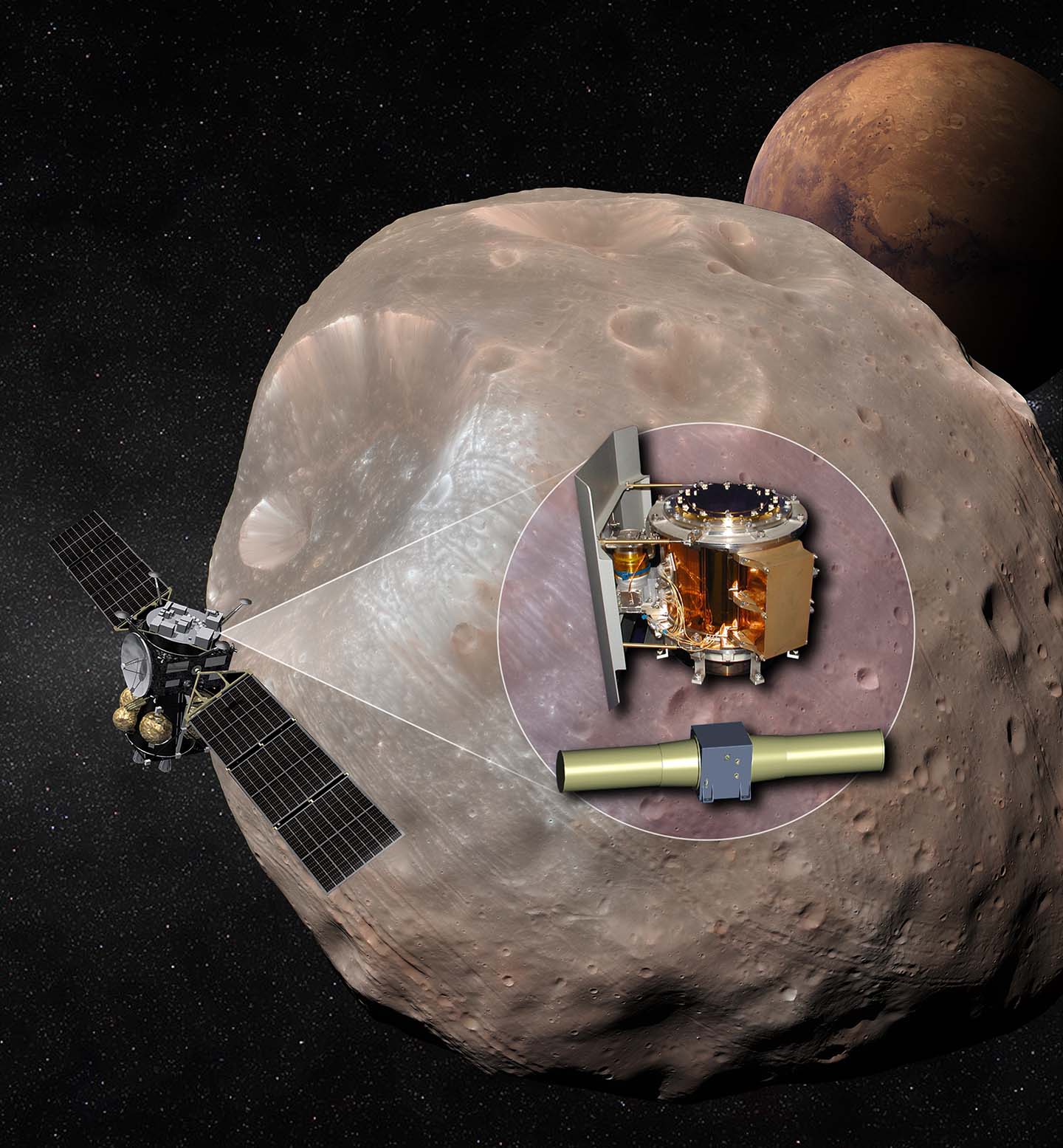Press Release
Back to the Red Planet
NASA Selects Johns Hopkins APL Instrument For International Mission to Martian Moons
NASA has tapped the Johns Hopkins Applied Physics Laboratory (APL) in Laurel, Maryland, to build a science instrument for an upcoming Japan-led sample return mission to the two moons of Mars.
The instrument, a sophisticated gamma-ray and neutron spectrometer named MEGANE (pronounced meh-gah-nay, meaning “eyeglasses” in Japanese), will help scientists resolve one of the most enduring mysteries of the Red Planet: when and how the small moons formed.
The Martian Moons eXploration (MMX) mission is in development by the Japan Aerospace Exploration Agency (JAXA). Planned for launch in 2024, MMX will visit the Martian moons Phobos and Deimos, land on the surface of Phobos, collect a surface sample and then return that sample to Earth. NASA is supporting the development of one of the spacecraft’s seven science instruments.
“Solving the riddle of how Mars’ moons came to be will help us better understand how planets formed around our Sun and, in turn, around other stars,” said Thomas Zurbuchen, associate administrator for NASA’s Science Mission Directorate (SMD) at Headquarters in Washington. “International partnerships like this provide high-quality science with high-impact return.”
APL space scientist David Lawrence will lead the team developing MEGANE (also an acronym for Mars-moon Exploration with GAmma rays and NEutrons), which will give MMX the ability to “see” the elemental composition of Phobos and Deimos by measuring naturally emitted gamma rays and neutrons from the Martian moons. These gamma rays and neutrons are generated by cosmic rays that continually strike and penetrate their surfaces.
The gamma-ray and neutron measurements will provide key information to help determine whether the Martian moons are captured asteroids or the result of a larger body hitting Mars, and will be used to study surface processes on the two bodies. MEGANE data will also support site selection for the MMX-gathered samples that will be returned to Earth, and provide critical context as scientists study these samples.
“Understanding how Phobos and Deimos formed has been a goal of the planetary science community for many years,” said Lawrence, the MEGANE principal investigator. “We are honored and grateful to be selected by NASA to work with JAXA as part of this exciting mission.”
MEGANE will be developed under NASA’s Discovery Program, which provides frequent, low-cost access to space using principal investigator-led space science investigations relevant to SMD’s planetary science program. It will be a slightly smaller and more power-efficient version of the APL-built Gamma-Ray and Neutron Spectrometer on NASA’s Mercury-orbiting MESSENGER spacecraft (also built by APL), which from 2011 to 2015 collected and returned paradigm-changing data from the solar system’s innermost planet.
The instrument, which includes key components from Lawrence Livermore National Laboratory (LLNL), will be built by the same engineering team that is developing a similar instrument for NASA’s Psyche mission. The science team consists of investigators from APL as well as LLNL, NASA Ames Research Center and Tokyo Institute of Technology.
APL has built 69 spacecraft and more than 200 specialized instruments that have collected critical scientific data from the Sun to Pluto and beyond. The Lab’s most recent Mars instrument — the powerful Compact Reconnaissance Imaging Spectrometer for Mars (CRISM) aboard NASA’s Mars Reconnaissance Orbiter — uncovered a wide range of chemical evidence indicating where and when water was present on the Red Planet.
The Discovery Program is managed by NASA’s Marshall Space Flight Center in Huntsville, Alabama, for SMD, which conducts a wide variety of research and scientific exploration programs for Earth studies, space weather, the solar system and universe. For more information about the Discovery Program, visit http://planetarymissions.nasa.gov.
